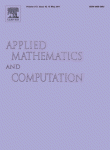 Yesterday, we reported that National Geographic had bought ScienceBlogs. We’ve now obtained a recording of a conference call between various members of National Geographic senior management, ScienceBlogs management, and ScienceBloggers — aka Sciblings — that adds some details.
Yesterday, we reported that National Geographic had bought ScienceBlogs. We’ve now obtained a recording of a conference call between various members of National Geographic senior management, ScienceBlogs management, and ScienceBloggers — aka Sciblings — that adds some details.
What we’ve learned is that Nat Geo plans to assume control of operations, editorial content, and ad sales by June 1 of this year. And while a post from PZ Myers post said “basically, we’ve been bought,” and we had further confirmation last night of the contents of yesterday’s post from someone familiar with the situation, we want to make sure to point out, high up, that one of the first things that SEED CFO and vice president of finance and operation’s Vera Scavcic said on the call was that SEED would maintain ownership: Continue reading More details emerge on ScienceBlogs-National Geographic deal








